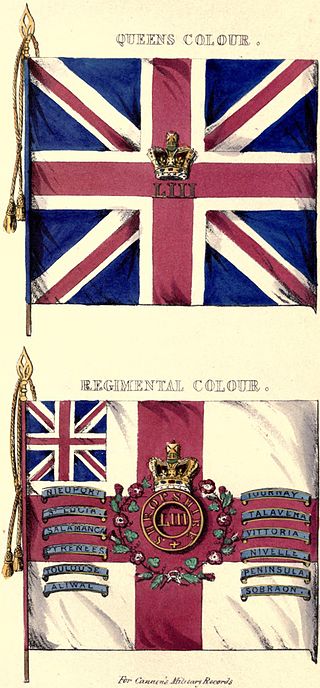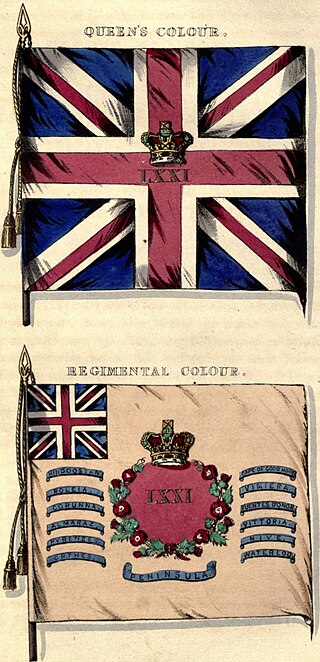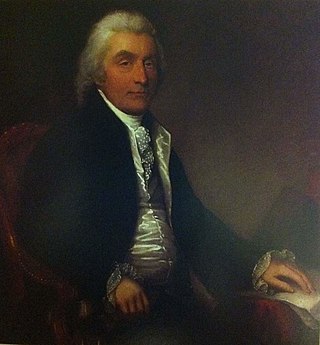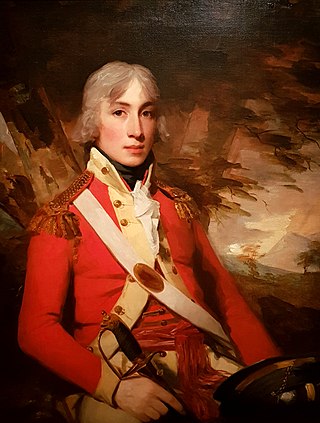Related Research Articles

Thomas Bruce, 7th Earl of Elgin and 11th Earl of Kincardine,, often known as Lord Elgin, was a Scottish nobleman, diplomat, and collector, known primarily for the controversial procurement of marble sculptures from the Parthenon and other structures on the Acropolis of Athens.

Lieutenant-General Sir Alan Cameron of Erracht was a Scottish soldier who, at his own expense in 1793, raised the 79th Regiment of Foot.

The 53rd (Shropshire) Regiment of Foot was a British Army regiment, raised in 1755. Under the Childers Reforms it amalgamated with the 85th Regiment of Foot to form the King's Shropshire Light Infantry in 1881.

The 72nd Highlanders was a British Army Highland Infantry Regiment of the Line. Raised in 1778, it was originally numbered 78th, before being redesignated the 72nd in 1786. Under the Childers Reforms it amalgamated with the 78th (Highlanders) Regiment to form the 1st Battalion of the Seaforth Highlanders in 1881.

The 78th (Highlanders) Regiment of Foot was a Highland Infantry Regiment of the Line, raised in 1793. Under the Childers Reforms it amalgamated with 72nd Regiment, Duke of Albany's Own Highlanders to form the Seaforth Highlanders in 1881.

The 71st Regiment of Foot was a Highland regiment in the British Army, raised as the 73rd (Highland) Regiment of Foot in 1777. Under the Childers Reforms it amalgamated with the 74th (Highland) Regiment of Foot to become the 1st Battalion, Highland Light Infantry in 1881.
The 124th Regiment of Foot was an infantry regiment of the British Army, formed in 1794 and disbanded in 1795.
The 109th (Aberdeenshire) Regiment of Foot was an infantry regiment of the British Army from 1794 to 1795. Raised by Alexander Leith Hay for service in the French Revolutionary Wars the regiment was briefly deployed in Jersey before it was disbanded in England and its men sent to reinforce the 53rd (Shropshire) Regiment of Foot. The disbandment was controversial as Leith-Hay believed it contravened an assurance given to him in his original letter of service to raise the regiment.
The 75th (Stirlingshire) Regiment of Foot, was a British Army line infantry regiment, raised in 1787. Under the Childers Reforms it amalgamated with the 92nd Regiment of Foot to form the Gordon Highlanders in 1881.

General William Wemyss of Wemyss was a Scottish soldier in the British Army and Member of Parliament.
Lieutenant-Colonel Charles Stewart (1775–1812) was a British Army officer who fought and died in the Napoleonic wars. He was commissioned as a lieutenant in 71st Highlanders in 1791. He was wounded at the Siege of Seringapatam (1792). He was prompted to lieutenant-colonel of the 50th Foot in 1805. He commanded first battalion on the Walcheren expedition (1809), and also in the Peninsula from 1811 to 1812. He died on campaign at Coria.
In the military history of Great Britain, the plan of raising a fencible corps in the Scottish Highlands was first proposed and carried into effect by British politician William Pitt the Elder, in the year 1759. During the three preceding years, both the fleets and armies of Great Britain had suffered reverses, and it was thought that a "home guard" was necessary as a bulwark against invasion.

The Royal Nova Scotia Regiment was a battalion of infantry raised in 1793 to defend British interests in the colony of Nova Scotia during the Wars of the French Revolution. The unit was commanded by Colonel John Wentworth, the lieutenant-governor of the colony, throughout its existence. The Royal Nova Scotia Regiment (RNSR) had an undistinguished history through most of its existence, and saw very limited action, mostly in the role of marines, but did play an important role in the defense of Nova Scotia during these wars.
The 99th Regiment of Foot was an infantry regiment of the British Army, raised on 10 February 1794 by Lieutenant-Colonel Stuart Douglas and numbered as the 99th Foot in October of the same year.
Colonel Sir William Douglas K.C.B., was a British Army officer during the Napoleonic Wars.
Lieutenant Colonel Henry Milling was a British Army officer who fought in the Napoleonic Wars.

Major-General Alexander Murray Macgregor, born Alexander Murray, was a Scottish army officer in the British East India Company.
Major-General George Johnstone was a British Army officer. He was commissioned into the infantry 1780, serving in Grenada during Fédon's rebellion in 1795–96. He was afterwards transferred to command a regiment of fencibles in New Brunswick, where he served for a year as acting Lieutenant Governor. In 1810, he was given command of a Highland regiment which served on garrison duty in Cape Colony. Johnstone was promoted to major general in 1814 and given command of the 6th Brigade in the 1815 Waterloo campaign. His brigade was not engaged in the 18 June Battle of Waterloo as they were posted to the extreme right flank, protecting the approaches to Brussels and Ostend. His men fought in the subsequent advance to Paris and helped to storm the fortress of Cambrai on 24 June.
Lieutenant General Hon John Ramsay was a British army officer and briefly a Member of Parliament.
References
- Chapman, A., ed. (September 1795), "Promotions Sequestrations etc", The Scots Magazine; Or, General Repository of Literature, History, and Politics, vol. 57, Edinburgh: James Watson and company, p. 616
- McGuigan, Ron (September 2009) [2003], The Forgotten Army: Fencible Regiments of Great Britain 1793 - 1816: Regiments of Fencible Infantry 1793 - 1803, Napoleon Series[ better source needed ]
- Stewart, David (1822), Sketches of the character, manners and present state of the Highlanders of Scotland (2 ed.), Longman, Hurst, Rees, Orme and Brown, p. 396